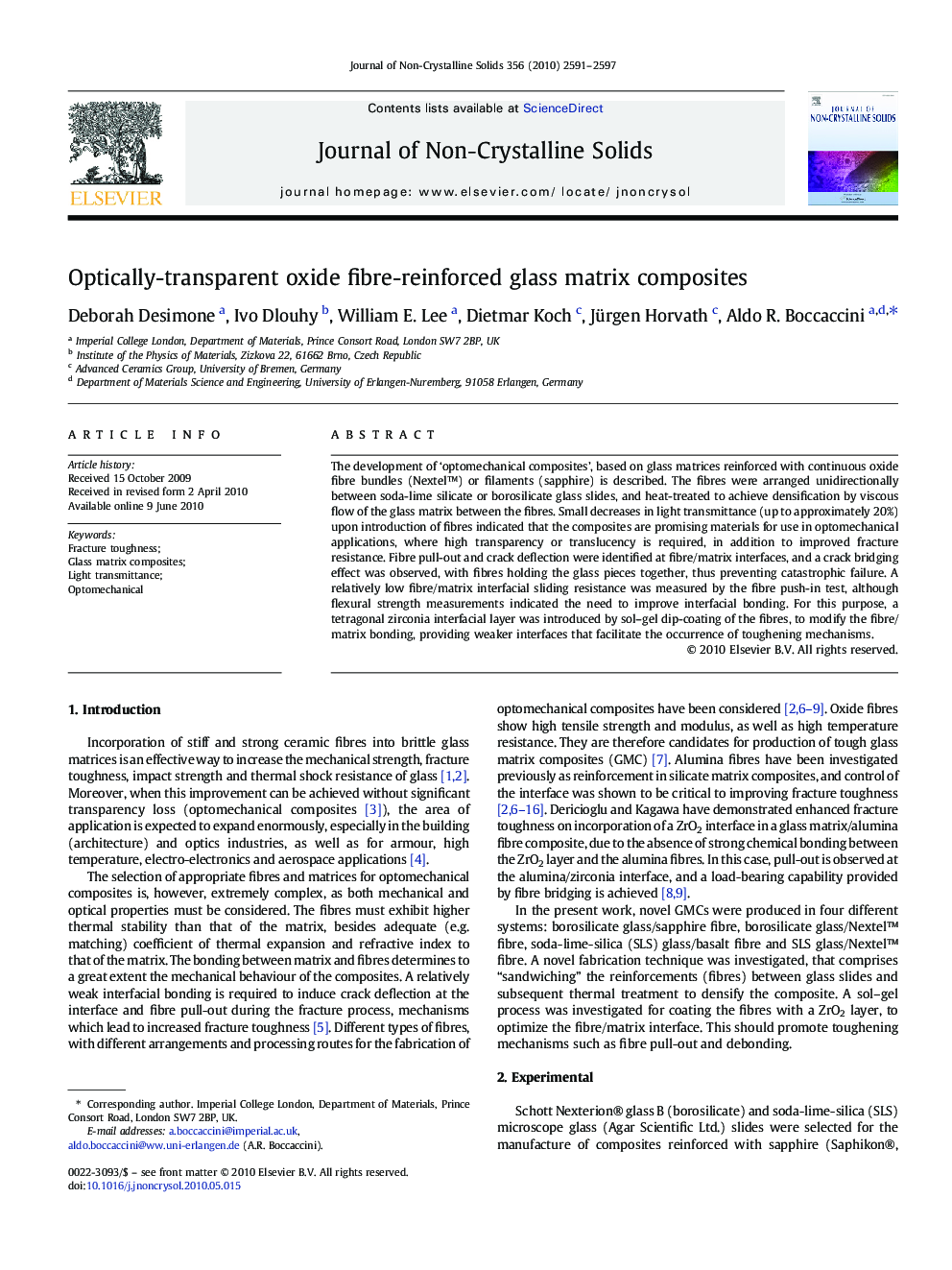| Article ID | Journal | Published Year | Pages | File Type |
|---|---|---|---|---|
| 1482796 | Journal of Non-Crystalline Solids | 2010 | 7 Pages |
The development of ‘optomechanical composites’, based on glass matrices reinforced with continuous oxide fibre bundles (Nextel™) or filaments (sapphire) is described. The fibres were arranged unidirectionally between soda-lime silicate or borosilicate glass slides, and heat-treated to achieve densification by viscous flow of the glass matrix between the fibres. Small decreases in light transmittance (up to approximately 20%) upon introduction of fibres indicated that the composites are promising materials for use in optomechanical applications, where high transparency or translucency is required, in addition to improved fracture resistance. Fibre pull-out and crack deflection were identified at fibre/matrix interfaces, and a crack bridging effect was observed, with fibres holding the glass pieces together, thus preventing catastrophic failure. A relatively low fibre/matrix interfacial sliding resistance was measured by the fibre push-in test, although flexural strength measurements indicated the need to improve interfacial bonding. For this purpose, a tetragonal zirconia interfacial layer was introduced by sol–gel dip-coating of the fibres, to modify the fibre/matrix bonding, providing weaker interfaces that facilitate the occurrence of toughening mechanisms.
